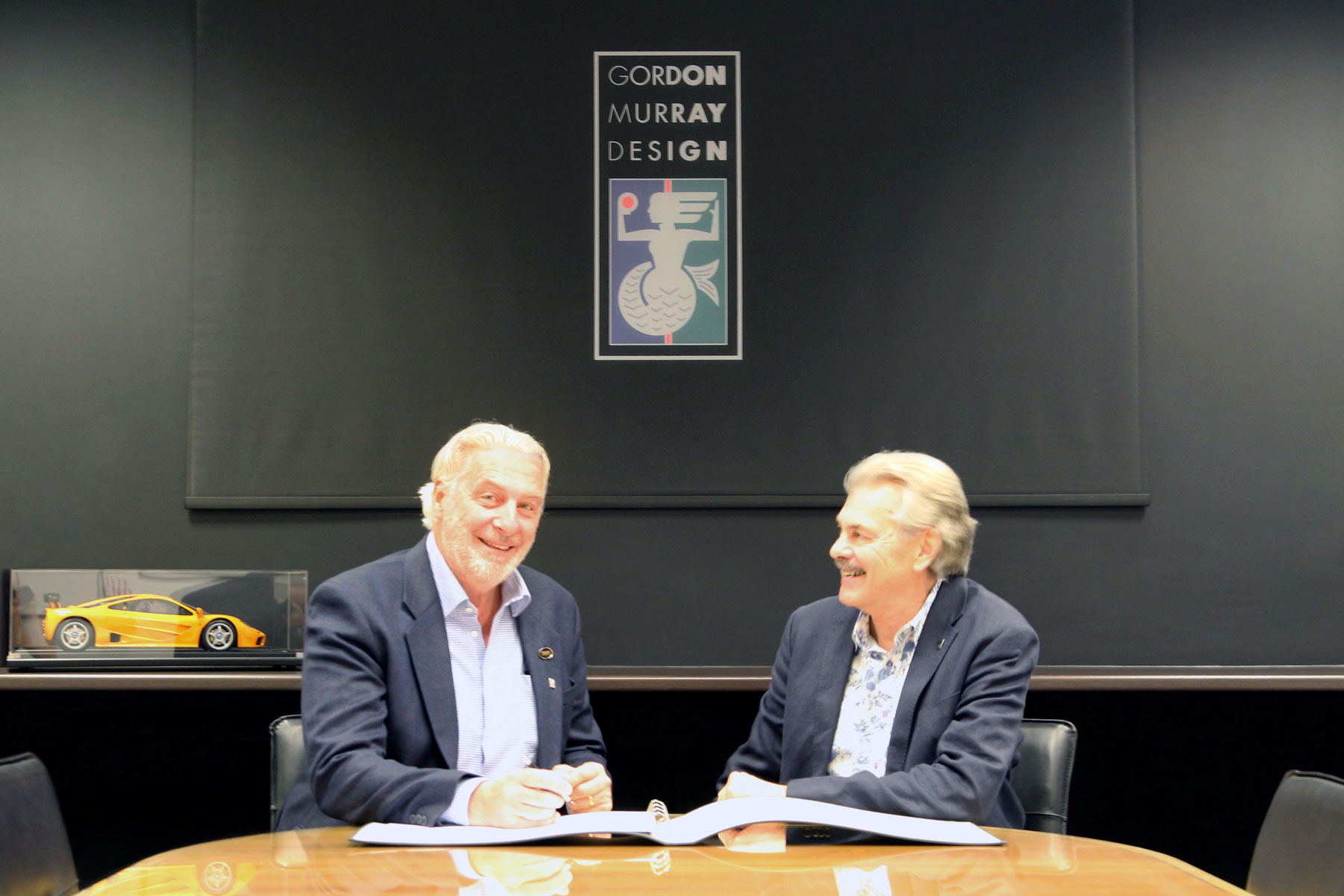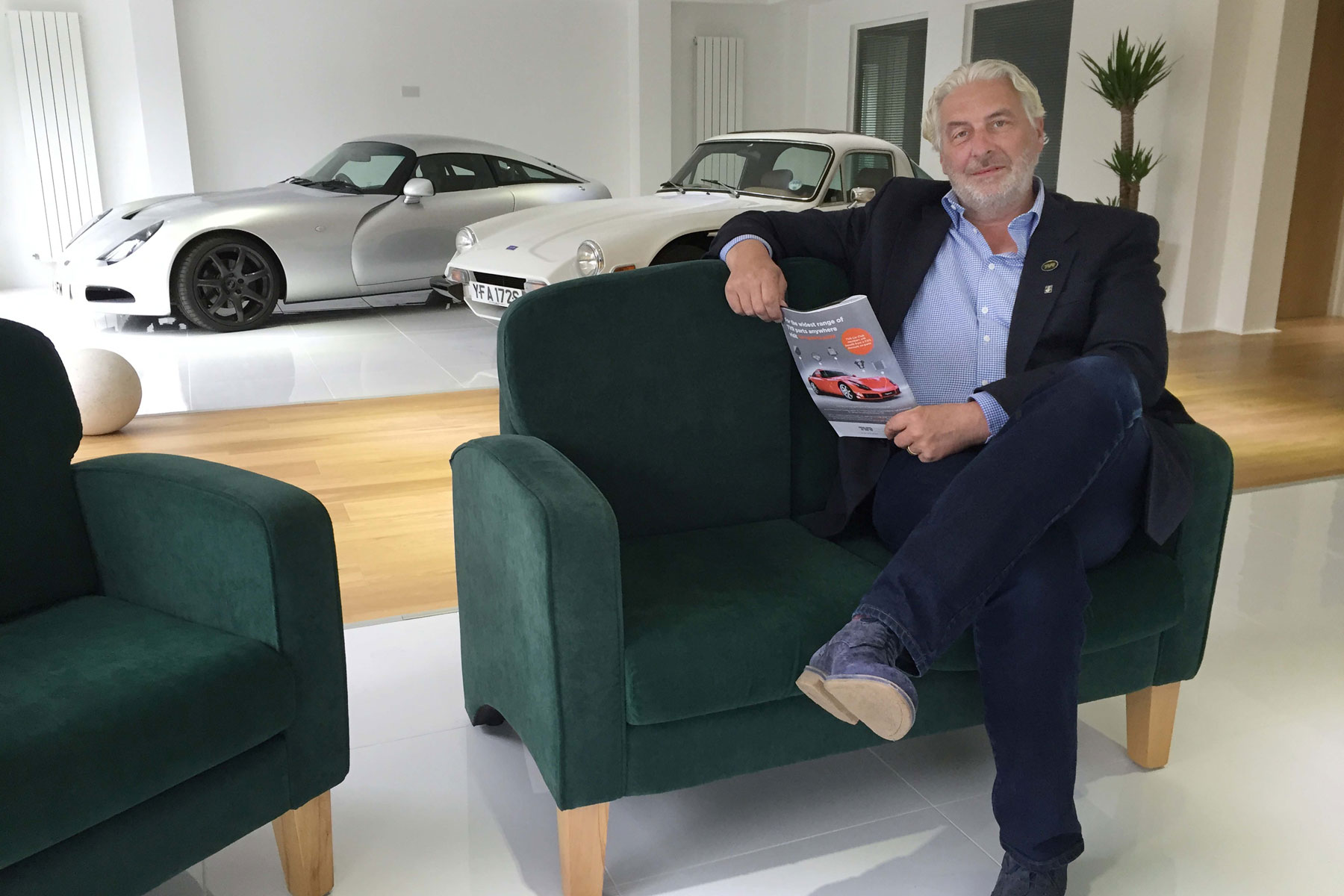‘The car…will feature the traditional TVR DNA of a front engine with rear wheel drive and a manual transmission, powered by a normally aspirated, dry-sumped, V8 engine, developed and engineered by Cosworth’.
If that’s not a reason to be cheerful, we don’t know what is.
It means TVR is back and in 2017 you will be able to buy a brand new car designed and built by the former Blackpool-based company. But hang on, haven’t we been here before? Didn’t we all get over-excited about the prospect of a reborn TVR under Russian ownership, only to see our hopes disappearing in a cloud of blue smoke?
Things are different this time. The current management team acquired the TVR brand in 2013, with chairman, Les Edgar, at the helm. Yes, that Les Edgar – the one famous for heading up computer games developer, Bullfrog Productions.
Secondly, TVR has chosen to join forces with Gordon Murray Design Limited, who will deliver a composite ground effect aero chassis and body package using the company’s iStream technology. In basic terms, iStream is a simplified assembly process, meaning a manufacturing plant can be 20 percent the size of a traditional factory. This in turn reduces capital investment costs by approximately 80 percent – a sizeable chunk for a fledging and low-volume sports car company.
And if that’s not enough, the project is said to be over a year into its development, making the aim of delivering a production-ready TVR by 2017 a realistic prospect.
Prices and production volumes are to be announced, but we wouldn’t expect TVR to stray too far away from its market positioning of the past. Indeed, TVR is promising a ‘competitive price point’ and we forecast volumes of between 1,000 and 1,500 a year. The new cars will be designed and built in the UK, with TVR claiming to reestablish the much-loved firm as ‘an all-British institution.’
Les Edgar said: ‘We know that a new TVR has to be better than just good – it has to be outstanding. From the outset we only wanted to work with the best partners in the business, and both Gordon Murray’s and Cosworth’s track records within motor sport and high performance car design and engineering speaks for themselves.’
For his part, design and engineering guru, Gordon Murray, said: “TVR is an iconic brand which has been an important part of British sports car manufacturing for many decades. Its return to manufacturing is an exciting development and the car deserves the best chassis and powertrain that can possibly be delivered.’ Given what Murray achieved with the McLaren F1, you’d forgive us for getting a little excited about his involvement with TVR.
Sceptics will argue that this is little more than a pipe dream and that TVR failed for a reason. Founded by Trevor Wilkinson in 1947, TVR established itself as one of Britain’s favourite low-volume sports car manufacturers. Blackpool’s Peter Wheeler took over in 1981 and went on to deliver a number of lightweight cars, rear-wheel drive cars with a meaty engine sat at the front.
Names like Cerbera, Tuscan, Chimaera, Griffith and Sagaris will stir the soul of petrolheads across the land. But TVR was ill-equipped to deal with the increasing demands for safety and emissions regulations and the company was sold to the son of a Russian billionaire in 2004. Sadly, this came to nothing.
Things should be different this time. TVR is said to be ‘well-funded and well-supported’ and with Cosworth and Gordon Murray on board, it has to of the most respected names in the business. Crucially, even a decade on from when Peter Wheeler shut up shop, the TVR brand remains strong. There will be no shortage of people keen to part with their cash for a well-engineered sports car wearing a TVR badge.
We’d be quite happy to see a re-born and re-engineered Sagaris, but the company is promising something all-new. Who knows, perhaps the company will produce some heritage models, in the same way Jaguar delivered the lightweight E-Type. Well, we can dream.

